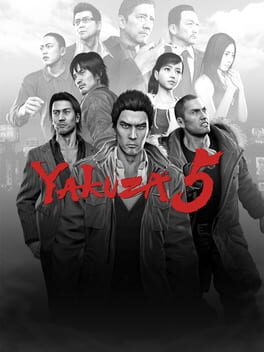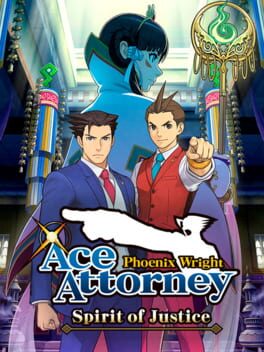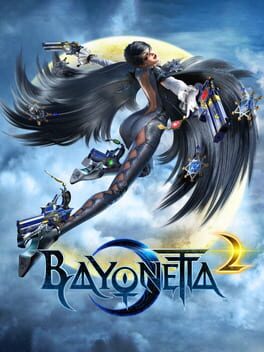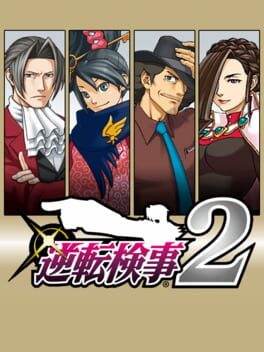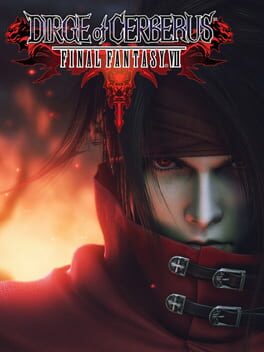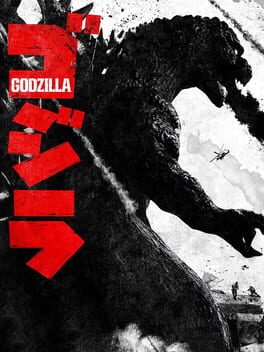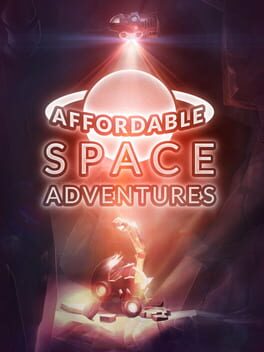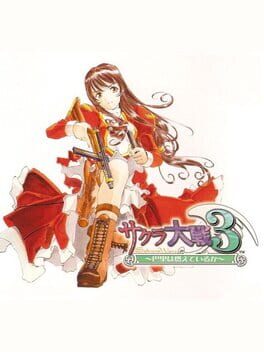slimemasterzero
256 Reviews liked by slimemasterzero
Yakuza 5
2012
+ Soundtrack is refreshing as always
+ New Country lore is planned out
+ Call backs to older games
+ Over arching theme is applied well
+ Case 2
+ Mental Breakdowns are more animated
~ Retcons minor details
~ Insights can be obtuse
~ Case 5 is too long
~ Stop arresting Maya
~ This is more like Apollo Justice 2
~ Cut down on power gimmicks
- New Prosecutor sucks
- Case 1 and 4 feel odd due to their lengths.
- Anime cutscenes are mostly pointless
+ New Country lore is planned out
+ Call backs to older games
+ Over arching theme is applied well
+ Case 2
+ Mental Breakdowns are more animated
~ Retcons minor details
~ Insights can be obtuse
~ Case 5 is too long
~ Stop arresting Maya
~ This is more like Apollo Justice 2
~ Cut down on power gimmicks
- New Prosecutor sucks
- Case 1 and 4 feel odd due to their lengths.
- Anime cutscenes are mostly pointless
Doom
1993
DOOM is a game that needs no introduction or explanation. Everyone knows what it is, everyone knows the legacy it left behind, and it's one of those games that everyone takes for granted. Between mods, sourceports, sequels, reboots, questionable DOOM games with the number 3 on their title, there's enough DOOM to last anybody a lifetime, to the point where I wonder how many people even played vanilla DOOM and how long ago most people did.
The good news is, on its own DOOM is still a really fun, well designed game. It's impressive how not only did id Software essentially invented a genre here (Wolfenstein 3D notwithstanding), but also how much they knew of the strength of their own mechanics. It's very rare that developers figure it out this quickly, usually there's sequels that iron out whichever issues pop up, but what you get here are three pretty good episodes containing still some of the greatest layouts in FPS history, and generally great examples of how to design FPS levels (hence the countless WADS, lots of them even better than what's on display here). They're varied, well paced, there's tons of little things to discover, and you probably won't even notice you've been playing the game for 3 hours in a row. Not every level is a hit, especially a couple of later ones where the game becomes less a shooter and more a game of guessing which transporter will bring you where, but even in these lesser levels the strength of the movement, shooting, and basic design principles still show through.
Obviously, DOOM should be played at least once by every shooter enthusiast. It may be a game that's been bested since, both in terms of gameplay depth and level design depth, but the core fundamentals are so sound here that it's easy to see how this little game spawned an IP, a whole genre of clones that will later on oversaturate the market, and maybe most importantly a passionate community of modders, designers and just people that are still playing this game almost 30 years later.
The good news is, on its own DOOM is still a really fun, well designed game. It's impressive how not only did id Software essentially invented a genre here (Wolfenstein 3D notwithstanding), but also how much they knew of the strength of their own mechanics. It's very rare that developers figure it out this quickly, usually there's sequels that iron out whichever issues pop up, but what you get here are three pretty good episodes containing still some of the greatest layouts in FPS history, and generally great examples of how to design FPS levels (hence the countless WADS, lots of them even better than what's on display here). They're varied, well paced, there's tons of little things to discover, and you probably won't even notice you've been playing the game for 3 hours in a row. Not every level is a hit, especially a couple of later ones where the game becomes less a shooter and more a game of guessing which transporter will bring you where, but even in these lesser levels the strength of the movement, shooting, and basic design principles still show through.
Obviously, DOOM should be played at least once by every shooter enthusiast. It may be a game that's been bested since, both in terms of gameplay depth and level design depth, but the core fundamentals are so sound here that it's easy to see how this little game spawned an IP, a whole genre of clones that will later on oversaturate the market, and maybe most importantly a passionate community of modders, designers and just people that are still playing this game almost 30 years later.
awesome detective themed outing from the main SMT series. it's unpolished but the great pacing and atmosphere already makes it worth the trip, not even mentioning the solid dungeon design (for the most part) and general fun to be had going through the game's quest. despite soul hackers being a straight upgrade, there's no other game in the franchise that feels quite like this one. definite recommendation for megaten fans; it's not that hard to play in japanese!
Bayonetta 2
2014
Klonoa is a game that maybe not everyone has played, but everyone has certainly heard of, and it might be hard to see why at first.
The gameplay premise of this 2D platformer is actually very simple: you pick up enemies and you either throw them in various directions (and dimensions) and/or double jump with them. Outside of this move and jumping there isn't much going on, but if Klonoa proves anything is that platformers are mostly made on their level design rather than base moveset.
Klonoa is a game that makes everything of its pretty short length (12 levels in total): every level has some sort of theme, whether it impacts the gameplay or just the visuals, to make them distinct from one another, without ever moving away from the core mechanics, but in fact gradually asking more and more out of the player. Not having any sort of gimmick stage is pretty impressive for a 1997 platformer, coming from an era where everybody was doing something gimmicky for variety (padding)'s sake, which shows how confident the developers were in their core gameplay.
The main and only real problem with the game is that it feels like it could've done a lot more. For about half the game it feels like the training wheels are still on, which is a shame because the last 4 levels or so really show how fun Klonoa can be with more complex enemies, layouts and puzzles. You'll be surprised at how much leverage the designers get out of such a simple idea.
Despite that, playing Klonoa is definitely a pleasant experience. It's nothing necessarily groundbreaking (nor do I think it wanted to be), but the combination of the well utilized main mechanic and weird dream-like atmosphere will definitely make an impression. And if that doesn't, the really bizarre ending might.
The gameplay premise of this 2D platformer is actually very simple: you pick up enemies and you either throw them in various directions (and dimensions) and/or double jump with them. Outside of this move and jumping there isn't much going on, but if Klonoa proves anything is that platformers are mostly made on their level design rather than base moveset.
Klonoa is a game that makes everything of its pretty short length (12 levels in total): every level has some sort of theme, whether it impacts the gameplay or just the visuals, to make them distinct from one another, without ever moving away from the core mechanics, but in fact gradually asking more and more out of the player. Not having any sort of gimmick stage is pretty impressive for a 1997 platformer, coming from an era where everybody was doing something gimmicky for variety (padding)'s sake, which shows how confident the developers were in their core gameplay.
The main and only real problem with the game is that it feels like it could've done a lot more. For about half the game it feels like the training wheels are still on, which is a shame because the last 4 levels or so really show how fun Klonoa can be with more complex enemies, layouts and puzzles. You'll be surprised at how much leverage the designers get out of such a simple idea.
Despite that, playing Klonoa is definitely a pleasant experience. It's nothing necessarily groundbreaking (nor do I think it wanted to be), but the combination of the well utilized main mechanic and weird dream-like atmosphere will definitely make an impression. And if that doesn't, the really bizarre ending might.
Gyakuten Kenji 2
2011
Everybody's Golf
2017
Chances are that you've heard of, seen, or played Everybody's Golf in your life. Unless you're American, then you'd know it as Hot Shots Golf (YIKES).
Either way, you're probably familiar with the gameplay formula here: arcadey golf that is simple enough in theory but complicated enough in application to be really engaging for hours. What's different here compared to the other games in the series (which at least had numbers or subtitles, so I can recognize which ones they are) isn't the gameplay itself but what's around it.
Namely the character building. You now create your character (or multiple of them if you so desire, the creation suite is really robust) and it will get better at specific things gradually, and depending on what equipment you use and how you play. This actually adds a lot to the game as every player can come up with their own solutions and perfect plays, while refining their own skills with the control system and physics.
But that's not all, as Everybody's Golf fancies itself a great "fucking around" game. You can fish, which comes with its own leveling and equipment, roam around various camps either on foot or with various types of carts, play online, do all these things in online courses, exchange profiles, and so on. It even comes up with a meaty single player experience if you don't desire to pay for PS+ (which I don't).
Everybody's Golf is a game that gives you a lot to sink your teeth into, while still doing it with style and remembering that it's all supposed to be chill and fun. Can't really ask anything more out of this game, which goes above and beyond giving players reasons to come back time and time again, making it a great purchase for anyone even just tangentially interested in golf games (or just fun arcade sports games).
Either way, you're probably familiar with the gameplay formula here: arcadey golf that is simple enough in theory but complicated enough in application to be really engaging for hours. What's different here compared to the other games in the series (which at least had numbers or subtitles, so I can recognize which ones they are) isn't the gameplay itself but what's around it.
Namely the character building. You now create your character (or multiple of them if you so desire, the creation suite is really robust) and it will get better at specific things gradually, and depending on what equipment you use and how you play. This actually adds a lot to the game as every player can come up with their own solutions and perfect plays, while refining their own skills with the control system and physics.
But that's not all, as Everybody's Golf fancies itself a great "fucking around" game. You can fish, which comes with its own leveling and equipment, roam around various camps either on foot or with various types of carts, play online, do all these things in online courses, exchange profiles, and so on. It even comes up with a meaty single player experience if you don't desire to pay for PS+ (which I don't).
Everybody's Golf is a game that gives you a lot to sink your teeth into, while still doing it with style and remembering that it's all supposed to be chill and fun. Can't really ask anything more out of this game, which goes above and beyond giving players reasons to come back time and time again, making it a great purchase for anyone even just tangentially interested in golf games (or just fun arcade sports games).
Godzilla: The Game
2014
From the get go it's obvious this game was made with an arcade in mind and was frankensteined into a console game at the last minute. While what on offer here is fun, polished serviceable gameplay, it wears thin after an hour, and completing it takes well over 40.
The game surprisingly, but effectively, uses tank controls. Moving the Kaiju is very intuitive and these controls really add great sense of weight to playing as them. Each is move well animated and looks natural to these monsters.
Most Kaiju have unique movesets, but there are a few lazy clones. Godzilla has 3 with the only difference being damage output, Showa Mechagodzilla is a carbon copy with a different colored armband. Mothra and Battra's adult forms only have a different beam. But overall most Kaiju feel unique and their moves are ripped straight from the films mostly.
The main meat of the Game is god of destruction mode. You'll be spending the majority of your time here. And you'll realize that the criticism of the gameplay being very repetitive and monotonous from mainstream critics does hold water. Your goal is to destroy as much of a city as possible while maintaining a fury chain, this in turn grows your Kaiju and makes encounters with boss Kaiju easier. But fighting other Kaiju is when the gameplay falls flat on its face
The game does not have a Guard function. So you can very easily get combo'd to death if you try Melee attacks. This makes every encounter with another Kaiju a slow prodding beam spam fest. You'll be doing this for 90% of the stages regardless of the difficulty path you chose. And boredom sets in fast when you're grinding for upgrades.
The game is legitimately fun when you're just going on a rampage through the city zones, maintaining a high fury rating and feeling powerful. Maintaining a high fury count increases the amount of evolution energy your Kaiju stores, Which is used to buy upgrades and figures.
You buy upgrades with evolution energy and cells you get from beating other Kaiju. Mercifully. These upgrades are relatively cheap. Only Godzilla, Burning Godzilla and Godzilla64 have new moves to buy. The rest of the Kaiju only have charge cool down decreases and new energy gauges to buy. Even with these cheap requirements. It will take dozens upon dozens of hours to fully upgrade the cast because you will need to mix and match the Kaiju you play as to get certain cells. This becomes very boring and annoying very quickly and even hardcore Godzilla fans will be annoyed since they can't stick to their favorites all the way to level 12.
The other modes are King of Kaiju, Diorama and VS, King of Kaiju is a simple time attack mode where you pick a Kaiju of your choice, and earn one of that Kaiju's cells and a random cell from one you defeated after 6 fights. If the devs upped the amount of cells to 3 instead of one, this would make the upgrades much less tedious, especially since upgrades are applicable to all modes, This makes King of Kaiju pointless since God of Destruction gives you the most cells.
Vs is the online only VS mode in which you and a random or person on your friends list fight each other online. The netcode isn't great, and you'll have frequent lag depending on who you match with. I had very little trouble finding a match despite this being a very niche, rare game so if that's something you enjoy, you'll have something to do. The online is clearly tacked on and does nothing to fix the terrible Kaiju to Kaiju combat. You'll be mostly beam spamming and mashing R2 to push away opponents.
Diorama is the games photo mode. You essentially create film sets and make your own monster flick posters. It's a novel little mode and hard core fans should get a lot out of it. Unfortunately getting sets and figures for the photos requires you to get a 100% destruction rate in every god of destruction stage, and you have to buy figures in the skill trees for each kaiju with their cells. Exacerbating the already overly grindy gameplay.
The game runs at a mostly locked 60 FPS. It only drops when, occasionally, your R2 AOE attack is used in a area with a lot buildings. But the game runs very well barring that. With no screen tearing, no pop in and good texture streaming.
Visually. The game looks average, with the Kaiju being the main focus of the fidelity. The devs cleverly scanned SH monster arts figures instead of creating them from scratch. Each kaiju is exceptionally well modeled and detailed due to this and even have some great minor details like quivering lips when roaring, antennas twitching etc.
The textures and environments are passable. The PS4 up port allows the game to use clearer textures that while not fantastic, are much better than the smears of the original Japanese PS3 version. There is a neat little nod to the films when buildings are about to be destroyed in that they flash before blowing up. Adding to the Godzilla sim feel the game is going for.
The music is excellent, it's mostly original tracks that try to emulate the films, but two of Ifukube's songs are present in the game and play at appropriate times a hardcore fan would expect.
There really isn't a story here. The game centers around Kaiju invading or protecting generators, that's it really. The gameplay is interrupted by a very annoying G-force operator every minute or so, though you can thankfully change the audio to Japanese and deal with bland monotone instead of annoying, grating yelling. The final boss of God of destruction mode is either Legendary Godzilla, Burning Godzilla or Desotoroyah, which all play out like every other fight in the game. And you will be fighting all three a lot because only then will you get your kaiju's cells.
Unless you are a hardcore Godzilla fan like me, or you collect rare games. I'd pass on this. While the game does an admirable job of attempting to be a Godzilla sim. It has so little on offer here, and is so repetitive that anyone who isn't a fan will probably drop this after an hour. For hardcore fans though, I'd say go for it. No other Godzilla game actually attempts to replicate how it would feel to control a slow lumbering giant monster like this one does.
5/10.
The game surprisingly, but effectively, uses tank controls. Moving the Kaiju is very intuitive and these controls really add great sense of weight to playing as them. Each is move well animated and looks natural to these monsters.
Most Kaiju have unique movesets, but there are a few lazy clones. Godzilla has 3 with the only difference being damage output, Showa Mechagodzilla is a carbon copy with a different colored armband. Mothra and Battra's adult forms only have a different beam. But overall most Kaiju feel unique and their moves are ripped straight from the films mostly.
The main meat of the Game is god of destruction mode. You'll be spending the majority of your time here. And you'll realize that the criticism of the gameplay being very repetitive and monotonous from mainstream critics does hold water. Your goal is to destroy as much of a city as possible while maintaining a fury chain, this in turn grows your Kaiju and makes encounters with boss Kaiju easier. But fighting other Kaiju is when the gameplay falls flat on its face
The game does not have a Guard function. So you can very easily get combo'd to death if you try Melee attacks. This makes every encounter with another Kaiju a slow prodding beam spam fest. You'll be doing this for 90% of the stages regardless of the difficulty path you chose. And boredom sets in fast when you're grinding for upgrades.
The game is legitimately fun when you're just going on a rampage through the city zones, maintaining a high fury rating and feeling powerful. Maintaining a high fury count increases the amount of evolution energy your Kaiju stores, Which is used to buy upgrades and figures.
You buy upgrades with evolution energy and cells you get from beating other Kaiju. Mercifully. These upgrades are relatively cheap. Only Godzilla, Burning Godzilla and Godzilla64 have new moves to buy. The rest of the Kaiju only have charge cool down decreases and new energy gauges to buy. Even with these cheap requirements. It will take dozens upon dozens of hours to fully upgrade the cast because you will need to mix and match the Kaiju you play as to get certain cells. This becomes very boring and annoying very quickly and even hardcore Godzilla fans will be annoyed since they can't stick to their favorites all the way to level 12.
The other modes are King of Kaiju, Diorama and VS, King of Kaiju is a simple time attack mode where you pick a Kaiju of your choice, and earn one of that Kaiju's cells and a random cell from one you defeated after 6 fights. If the devs upped the amount of cells to 3 instead of one, this would make the upgrades much less tedious, especially since upgrades are applicable to all modes, This makes King of Kaiju pointless since God of Destruction gives you the most cells.
Vs is the online only VS mode in which you and a random or person on your friends list fight each other online. The netcode isn't great, and you'll have frequent lag depending on who you match with. I had very little trouble finding a match despite this being a very niche, rare game so if that's something you enjoy, you'll have something to do. The online is clearly tacked on and does nothing to fix the terrible Kaiju to Kaiju combat. You'll be mostly beam spamming and mashing R2 to push away opponents.
Diorama is the games photo mode. You essentially create film sets and make your own monster flick posters. It's a novel little mode and hard core fans should get a lot out of it. Unfortunately getting sets and figures for the photos requires you to get a 100% destruction rate in every god of destruction stage, and you have to buy figures in the skill trees for each kaiju with their cells. Exacerbating the already overly grindy gameplay.
The game runs at a mostly locked 60 FPS. It only drops when, occasionally, your R2 AOE attack is used in a area with a lot buildings. But the game runs very well barring that. With no screen tearing, no pop in and good texture streaming.
Visually. The game looks average, with the Kaiju being the main focus of the fidelity. The devs cleverly scanned SH monster arts figures instead of creating them from scratch. Each kaiju is exceptionally well modeled and detailed due to this and even have some great minor details like quivering lips when roaring, antennas twitching etc.
The textures and environments are passable. The PS4 up port allows the game to use clearer textures that while not fantastic, are much better than the smears of the original Japanese PS3 version. There is a neat little nod to the films when buildings are about to be destroyed in that they flash before blowing up. Adding to the Godzilla sim feel the game is going for.
The music is excellent, it's mostly original tracks that try to emulate the films, but two of Ifukube's songs are present in the game and play at appropriate times a hardcore fan would expect.
There really isn't a story here. The game centers around Kaiju invading or protecting generators, that's it really. The gameplay is interrupted by a very annoying G-force operator every minute or so, though you can thankfully change the audio to Japanese and deal with bland monotone instead of annoying, grating yelling. The final boss of God of destruction mode is either Legendary Godzilla, Burning Godzilla or Desotoroyah, which all play out like every other fight in the game. And you will be fighting all three a lot because only then will you get your kaiju's cells.
Unless you are a hardcore Godzilla fan like me, or you collect rare games. I'd pass on this. While the game does an admirable job of attempting to be a Godzilla sim. It has so little on offer here, and is so repetitive that anyone who isn't a fan will probably drop this after an hour. For hardcore fans though, I'd say go for it. No other Godzilla game actually attempts to replicate how it would feel to control a slow lumbering giant monster like this one does.
5/10.
You ever wondered about whether there was a game that used every single feature of the Wii U? No? Well ok then.
This is entirely a puzzle game that will ask you to change your gaze between the Wii U gamepad and the TV constantly, to mostly decent effect. The designers were smart in making this an entirely non-action affair as it would've been very messy, but considering the relaxed pace of the game checking the gamepad to fix some settings and "testing" them on the field actually is very natural.
Another clever thing is how the gamepad is used to simulate being in an actual spaceship, with its own OS and interface. There was clearly tons of attention to detail put into the "immersive" aspect of the game, which also continues in its storytelling. While light, it actually is fairly interesting, and any piece of media that starts with a satirical fake ad is always awesome in my book.
What isn't so awesome is this game after all the luster wears off. After a while there's a sense of repetition that starts setting in, because while the obstacles to overcome technically change fairly frequently, all you're doing still boils down to checking your current stats, tuning them for the current situation, and proceeding if you tuned the ship correctly. This is a game that actually gets easier the more you play it, because there's no real curveball thrown at the player after the first 30 minutes.
When it comes down to it, Affordable Space Adventures is an interesting puzzle game that is solid enough. If you're still interested in the Wii U and its gimmicks this game is very much recommended, as it's one of the only products of its kind to use literally everything from the touchscreen, to the double screen aspect, to even Miiverse. I just wish this game had more meat and less potatoes, to make a cringey food analogy.
This is entirely a puzzle game that will ask you to change your gaze between the Wii U gamepad and the TV constantly, to mostly decent effect. The designers were smart in making this an entirely non-action affair as it would've been very messy, but considering the relaxed pace of the game checking the gamepad to fix some settings and "testing" them on the field actually is very natural.
Another clever thing is how the gamepad is used to simulate being in an actual spaceship, with its own OS and interface. There was clearly tons of attention to detail put into the "immersive" aspect of the game, which also continues in its storytelling. While light, it actually is fairly interesting, and any piece of media that starts with a satirical fake ad is always awesome in my book.
What isn't so awesome is this game after all the luster wears off. After a while there's a sense of repetition that starts setting in, because while the obstacles to overcome technically change fairly frequently, all you're doing still boils down to checking your current stats, tuning them for the current situation, and proceeding if you tuned the ship correctly. This is a game that actually gets easier the more you play it, because there's no real curveball thrown at the player after the first 30 minutes.
When it comes down to it, Affordable Space Adventures is an interesting puzzle game that is solid enough. If you're still interested in the Wii U and its gimmicks this game is very much recommended, as it's one of the only products of its kind to use literally everything from the touchscreen, to the double screen aspect, to even Miiverse. I just wish this game had more meat and less potatoes, to make a cringey food analogy.
Sakura Taisen 3 ~Pari wa Moeteiru ka~ (alternatively known as Sakura Wars 3: Is Paris Burning?) is the third entry in Sega's long-running Sakura Taisen series released for the Sega Dreamcast in 2001. Sakura Taisen 3 also happens to be my favorite entry in the series and for good reason! Sakura Taisen 3 is a fun, refreshing tactical RPG featuring a blend of overlapping visual novel/dating sim gameplay elements, mecha, french art inspirations, and time management aspects all wrapped up in an anime and musical theatre dressing.
From its opening sequence, Sakura Taisen 3 welcomes you with a vibrant opening track scored by the talented and prolific, Kohei Tanaka (best known for his work on One Piece) paired with the beautifully animated cutscenes by Production I.G setting the stage for a hell of a first impression as it eases you into the romantic backdrop of the streets of Paris filled with flashy intros of the game's central cast. While Sakura Taisen 1 laid the groundwork for the series' battle system and setting with Sakura Taisen 2 providing a deeper look into the world itself in addition to sporting some of the best writing in the series, Sakura Taisen 3 takes all of these ideas and not only refines them but continues to build upon and strengthen what makes the series so great. Keeping the series' staple systems, Sakura Taisen 3 represented a new direction for the development team as the engine and gameplay were rebuilt entirely in order to utilize the full power of the Dreamcast.
Following the events of Sakura Taisen 2, once again, you are placed into the shoes of series protagonist, Ichiro Ogami as he joins the recently established Paris Assault Force and is tasked with training their all-female "Paris Division" modeled on Ogami's original group from Tokyo, dedicated to the act of protecting the city from supernatural threats all while maintaining their cover as a cabaret act at the Les Chatte Noir nightclub. In typical series fashion, these girls are also extremely talented mech pilots, each girl sporting a unique and likable personality as well. With previous entries having 2d combat, Sakura Taisen 3 features a combat system fully realized in 3d with crisp new animations, making each of the game's combat segments spread over its eleven chapters run more invigorating than the last. Sakura Taisen 3 also adapts the series philosophy of mixing visual novel and turn-based strategy exceptionally well. For a major portion of the game, you'll be introduced to new characters, each with their own individual problems in which you aim to help solve their problems as part of their training. Most of these issues are often solved through the game's gameplay segments, a neat parallel with the gameplay often working in favor of the story as the group overcomes these troubles through teamwork often resulting in either flashy skirmishes or a satisfying boss battle. While formulaic in structure, this gameplay dynamic serves to help paint a more intimate portrait into the lives of each crew member while also helping to close each subplot satisfyingly as you begin to become invested in your fellow crew member's growth.
Sakura Taisen 3 also marks the return of the series iconic LIPS system. Simply put, the LIPS system involves Ogami making dialogue choices in a short manner of time that affects the outcome in a variety of events even extending to some combat scenarios. The true beauty of the LIPS system lies in its creativity in its implementation. With a quick tilt of the analog stick, the intensity of Ogami's responses can be heightened or lowered making simple actions like raising a toast much more engaging and as a result, adds a lot of personality to the dialogue. However, the LIPS system wouldn't quite work as well if Sakura Taisen 3's writing wasn't so fun and enjoyable. While the game does a great job at humanizing its cast through exploring their personal troubles, the main strength in its writing comes from its disassembling the notion that its cast is no more than a motley crew of anime tropes in human form. It's surprising when Sakura Taisen 3's main girl, Erica Fontaine, a clumsy, submachine gun-toting nun, has a subplot that heavily focuses on her motivations for maintaining her overbrimming enthusiasm in the face of a situation that's largely been filled with desperation and despair, shared as a common sentiment among her fellow crew members. While Erica's clumsiness does result in several personality clashes within the group, the group begrudgingly learns to work towards their common goals, and Erica's presence as an entertaining heroine throughout the game is only further cemented by her future interactions that mark her growth as a person and as a member of the Paris Assault Force.
All in all, Sakura Taisen 3 is a masterclass in character writing and an overall refinement of what makes the series so great. Sometimes moody and sometimes campy, Sakura Taisen revels in developing its cast through meaningful gameplay interactions that actively build upon the foundation of previous gameplay systems of its predecessors. With an extremely memorable narrative oozing with charm, Sakura Taisen 3 is a game that at times made me smile, laugh, tug at my heartstrings, and had me extremely emotional by the time the credits rolled as its ending theme "Future (Voyage)" played despite its cheesy lyrics. With a beautiful score and well-animated cutscenes accompanying its innovative hybrid gameplay, Sakura Taisen 3 is without a doubt the definitive Sakura Taisen game and possibly one of the best jrpgs on the Dreamcast. While it's a shame the game is largely tucked away from the public view due to the language barrier, in my eyes, Sakura Taisen 3 is a JRPG classic near and dear to my heart that will remain one of my personal favorites and a game I'll continue to talk about for years to come.
From its opening sequence, Sakura Taisen 3 welcomes you with a vibrant opening track scored by the talented and prolific, Kohei Tanaka (best known for his work on One Piece) paired with the beautifully animated cutscenes by Production I.G setting the stage for a hell of a first impression as it eases you into the romantic backdrop of the streets of Paris filled with flashy intros of the game's central cast. While Sakura Taisen 1 laid the groundwork for the series' battle system and setting with Sakura Taisen 2 providing a deeper look into the world itself in addition to sporting some of the best writing in the series, Sakura Taisen 3 takes all of these ideas and not only refines them but continues to build upon and strengthen what makes the series so great. Keeping the series' staple systems, Sakura Taisen 3 represented a new direction for the development team as the engine and gameplay were rebuilt entirely in order to utilize the full power of the Dreamcast.
Following the events of Sakura Taisen 2, once again, you are placed into the shoes of series protagonist, Ichiro Ogami as he joins the recently established Paris Assault Force and is tasked with training their all-female "Paris Division" modeled on Ogami's original group from Tokyo, dedicated to the act of protecting the city from supernatural threats all while maintaining their cover as a cabaret act at the Les Chatte Noir nightclub. In typical series fashion, these girls are also extremely talented mech pilots, each girl sporting a unique and likable personality as well. With previous entries having 2d combat, Sakura Taisen 3 features a combat system fully realized in 3d with crisp new animations, making each of the game's combat segments spread over its eleven chapters run more invigorating than the last. Sakura Taisen 3 also adapts the series philosophy of mixing visual novel and turn-based strategy exceptionally well. For a major portion of the game, you'll be introduced to new characters, each with their own individual problems in which you aim to help solve their problems as part of their training. Most of these issues are often solved through the game's gameplay segments, a neat parallel with the gameplay often working in favor of the story as the group overcomes these troubles through teamwork often resulting in either flashy skirmishes or a satisfying boss battle. While formulaic in structure, this gameplay dynamic serves to help paint a more intimate portrait into the lives of each crew member while also helping to close each subplot satisfyingly as you begin to become invested in your fellow crew member's growth.
Sakura Taisen 3 also marks the return of the series iconic LIPS system. Simply put, the LIPS system involves Ogami making dialogue choices in a short manner of time that affects the outcome in a variety of events even extending to some combat scenarios. The true beauty of the LIPS system lies in its creativity in its implementation. With a quick tilt of the analog stick, the intensity of Ogami's responses can be heightened or lowered making simple actions like raising a toast much more engaging and as a result, adds a lot of personality to the dialogue. However, the LIPS system wouldn't quite work as well if Sakura Taisen 3's writing wasn't so fun and enjoyable. While the game does a great job at humanizing its cast through exploring their personal troubles, the main strength in its writing comes from its disassembling the notion that its cast is no more than a motley crew of anime tropes in human form. It's surprising when Sakura Taisen 3's main girl, Erica Fontaine, a clumsy, submachine gun-toting nun, has a subplot that heavily focuses on her motivations for maintaining her overbrimming enthusiasm in the face of a situation that's largely been filled with desperation and despair, shared as a common sentiment among her fellow crew members. While Erica's clumsiness does result in several personality clashes within the group, the group begrudgingly learns to work towards their common goals, and Erica's presence as an entertaining heroine throughout the game is only further cemented by her future interactions that mark her growth as a person and as a member of the Paris Assault Force.
All in all, Sakura Taisen 3 is a masterclass in character writing and an overall refinement of what makes the series so great. Sometimes moody and sometimes campy, Sakura Taisen revels in developing its cast through meaningful gameplay interactions that actively build upon the foundation of previous gameplay systems of its predecessors. With an extremely memorable narrative oozing with charm, Sakura Taisen 3 is a game that at times made me smile, laugh, tug at my heartstrings, and had me extremely emotional by the time the credits rolled as its ending theme "Future (Voyage)" played despite its cheesy lyrics. With a beautiful score and well-animated cutscenes accompanying its innovative hybrid gameplay, Sakura Taisen 3 is without a doubt the definitive Sakura Taisen game and possibly one of the best jrpgs on the Dreamcast. While it's a shame the game is largely tucked away from the public view due to the language barrier, in my eyes, Sakura Taisen 3 is a JRPG classic near and dear to my heart that will remain one of my personal favorites and a game I'll continue to talk about for years to come.
